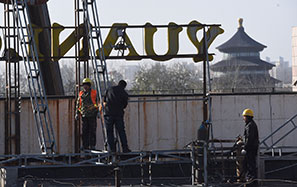Two more weather stations for Tibet Plateau
China will set up two more comprehensive weather- monitoring stations on the Qinghai-Tibet Plateau, another step toward the goal of establishing 23 stations on the plateau, said Yao Tandong, director of the Institute of Tibetan Plateau Research under the Chinese Academy of Sciences.
Sometimes called "the third pole", the Qinghai-Tibet Plateau has gained growing attention because of its significant role in global atmospheric circulation and its sensitivity to climate change.
China has about 10 monitoring stations on the plateau so far, said Yao. However, it is still too few to cover the area of more than 2.4 million square kilometers.
Since 2003, the Chinese Academy of Sciences has set up monitoring stations in Namtso, the Himalayas and Ngari.
"We will build two new stations at Hoh Xil and Medog as early as this year. The project will let us have a better understanding of global climate and environmental changes from information gathered in the plateau," Yao said.
The plateau has the cleanest environment in the country, Yao said. However, glaciers in the area have been retreating more quickly in the past decade because of climate change. The region is home to thousands of glaciers, which exert a direct influence on social and economic development in the surrounding regions of China, India, Nepal, Tajikistan, Pakistan, Afghanistan and Bhutan.
"Although the glacier loss will not affect the Qinghai-Tibet Railway, it may have an impact on hydropower generators in the region, which use water from the glaciers," Yao said.
According to the Chinese Academy of Sciences, the glacier loss has become greater in the past 10 years. Glacial retreat in the plateau has a significant effect on water availability in the arid regions in Northwest China. The institution's previous research shows that the glacial retreat in the 1990s caused an increase of 5.5 percent in river runoff in Northwest China.
"We need to build more multiple-function monitoring stations and an ecosystem monitoring platform to keep an eye on climate change and the environment, because it's a region that has unique interactions between the atmosphere, cryosphere, hydrosphere and biosphere. A single-function monitoring station isn't enough to do the job," Yao said.
Contact the writer at tuoyannan@chinadaily.com.cn


















